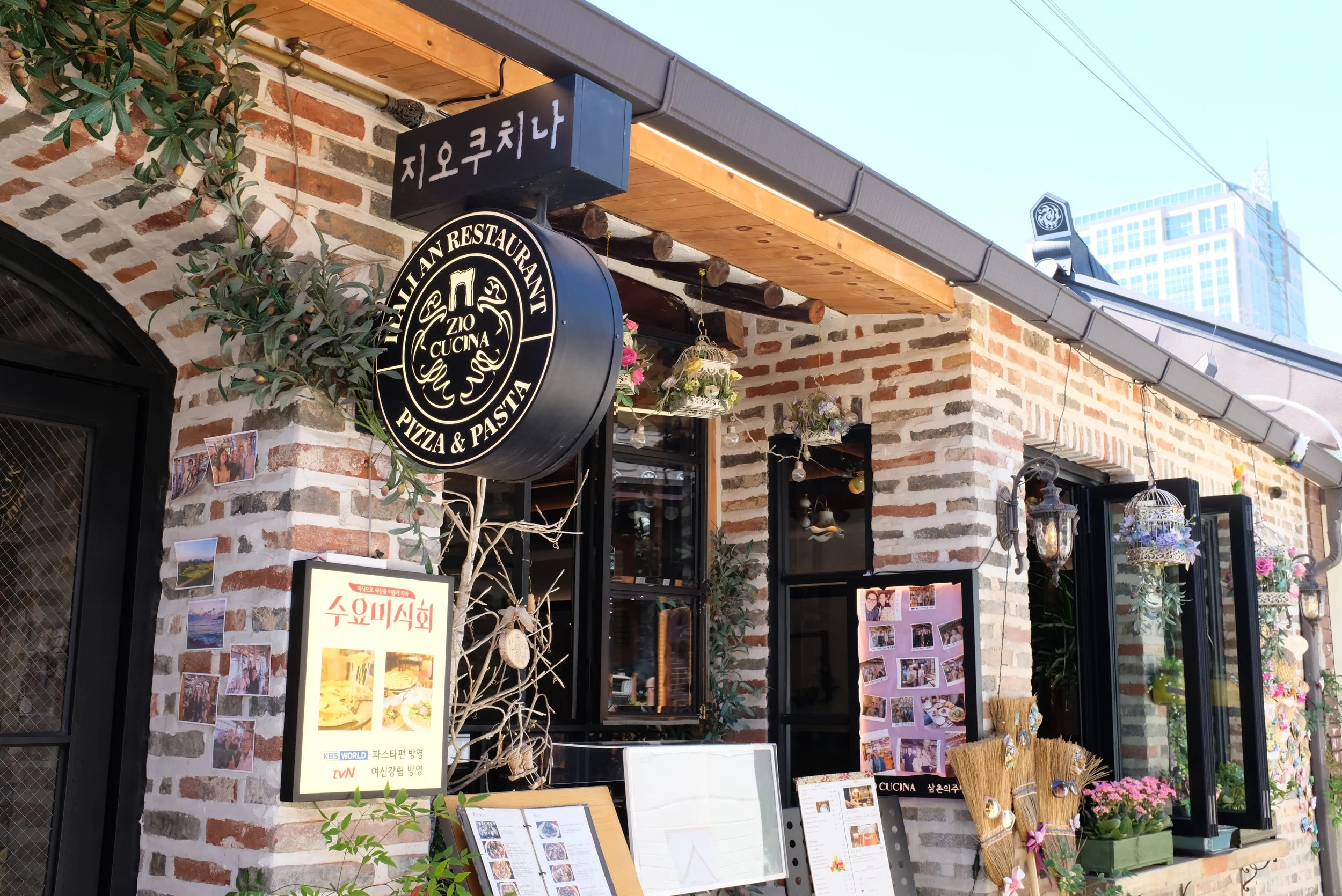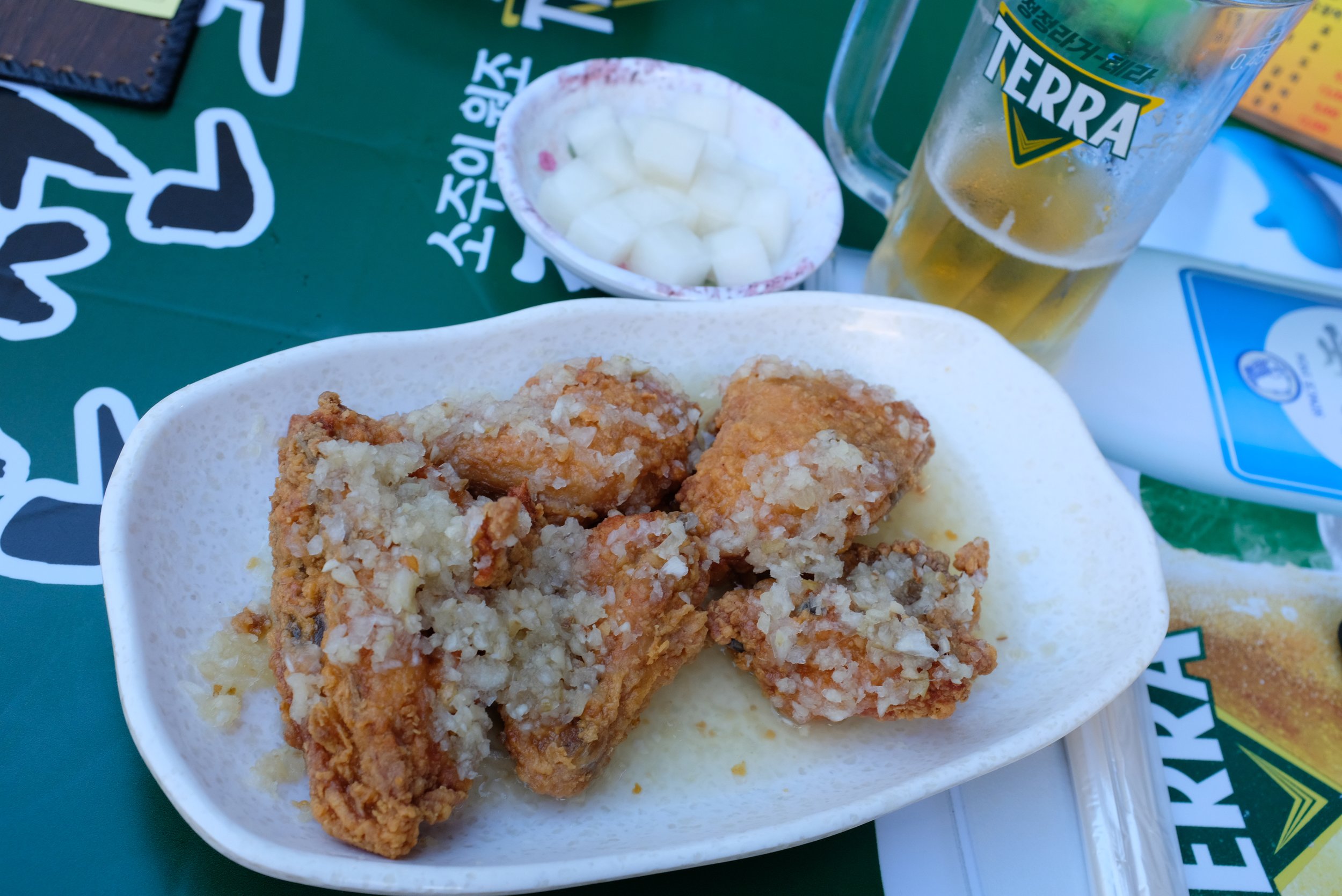Korea Trip 2022: Squeezing in Activities in Jung-gu and Jongno-gu
추석 (chuseok - Korean Thanksgiving) was approaching, and soon I would be seeing my extended family for the first time in over 13 years. Before that day arrived, I wanted to really make the most of my last day in Jung-gu, so my plan was to visit a hip neighborhood, a famous shrine, and one more major palace nearby.
Sewoon Sangga | Naver link








Remember that bridge extending from Toegye-ro to Sewoon Sangga on my first night in Korea? I got back on it with the intent of exploring that area, as I wanted to see what it was like during the day when a lot of the businesses there were open. As it turns out, there are a lot of stores specializing in electronic equipment, including CCTVs, speakers, and motherboards. There’s even a neat relaxation area that’s boombox-themed. I did hear that there was a rooftop with a great view of Seoul, and I took an elevator - located near the northern end - up to the rooftop, where there’s an observatory and courtyard. While Namsan Tower has it beat in terms of a cityscape view, this rooftop gave me an impressive view of the development occurring next to Sewoon Sangga. I couldn’t help but marvel at the old buildings being demolished so that a high-rise development can be built. When I exited the elevator back on the street level, I was very surprised to see a preserved archaeological site! The Seoul government undertook archaeological excavations in 2016 before construction could start on a major redevelopment plan, and archaeologists discovered traces of human activities three meters below the ground. The cultural layers could be grouped into three periods: the early Joseon period (15th and 16th Centuries), the late Joseon period (17th and 18th Centuries), and the modern and contemporary period (19th Century to present). Thus, the government decided to preserve the site and open it up to the public, which was what I was now looking at. This was nothing short of amazing.
익선동 (Ikseondong) | Naver link



Close to Sewoon Sangga is Ikseondong, which is described as one of Seoul’s more popular neighborhoods. It’s comprised of multiple hanoks and other buildings, all connected by a series of alleys. I fell in love with this place just after exploring one alley and, in almost no time, became my favorite spot in Seoul that I’ve traveled to so far.
It was getting close to lunchtime, and I wanted to beat what would inevitably be the lunch rush. I passed by a handful of Italian eateries, a Thai restaurant, and much more. As tempting as they were, I wanted something Korean - nothing specific, just Korean. I found that at 찬양집 (Chanyangjip) | Naver link, a restaurant specializing in 칼국수 (kalguksu - knife noodles). This dish consists of a bowl of soup featuring handmade, knife-cut noodles made from wheat flour. The restaurant was even featured in the Michelin Guide. While I’m usually not a big fan of kalguksu, I was very enticed by their specialty: 해물칼국수 (seafood kalguksu). I sat at a thin table and ordered a bowl of the kalguksu, which cost ₩8,000 ($5.81). It came out not long after, with a generous helping of clams as well as a few mussels. The noodles were nice and chewy, and the seafood was cooked well. I was given a side of traditional kimchi, which was surprisingly fresh instead of sour. The broth was lovely, and I happily finished my bowl.







Ikseondong has its fair share of cafes, and I made my way to 청수당 (Cheongsudang) | Naver link, which was living proof that Korean cafes were on a whole other level. There’s a small bamboo forest in front of the cafe, and in order to access the entrance, I had to step onto a pathway of circular stones, careful not to step onto the water surrounding them. The cafe itself is a hanok, and there are multiple areas to sit. If I wanted to be near the counter, I could sit at a long stone table, with plants, rocks, and water set in the middle, extending from one end to the other. If I wanted to remain indoors but preferred to sit cross-legged, there was a neatly kept area for that. If I wanted to sit cross-legged but close to nature, there was a space outside for that, next to what looked like a well maintained small forest, with even small fish darting about in the water. The cakes here caught my eye, so I ordered a 딸기 프로마주 케이크 (strawberry fromage cake) for for ₩14,000 ($10.17), and it came out looking more like a delicate work of art than a cake. It was topped with a layer of powdered sugar, with a few sliced strawberries lined across diagonally as well as several pieces of green cake meant to resemble foliage. There was quite a bit of weight to it, so I thought the cake was just dense, but as it turns out, the cake was placed into a rectangular stone bowl, thus explaining the cake’s sides’ dark colors. The cake tasted incredible, and it was a bit on the moist side. The cake had strawberry flavors inside as well, and when I dug into the cake and scooped out a piece, it revealed a dark pink color. I was initially worried about whether I could finish it, but I ate the whole thing without a hitch. I ended up staying for a while, relaxing and trying to figure out chuseok plans with my family.
종묘 (Jongmyo Shrine) | Naver link










Eventually, I had to (regrettably) leave Cheongsudang, and I walked over to Jongmyo Shrine, located just across the street from Sewoon Sangga. This is the supreme state shrine where the spirit tablets of deceased kings and queens are enshrined, and sacrificial rites are performed for them based on Confucian principles. Since I arrived on a weekday, only guided tours were available, so I bought one ticket for the 2:00pm English tour, which would take about an hour, for ₩1,000 ($0.73). I had almost an hour to kill, and I kind of regretted leaving Ikseondong, which I could have explored more of. Instead, I found another nearby cafe and hung out there until it was nearly time for the tour to start.
Our guide took our group - about 25 people - around the shrine’s grounds, sharing the historical background of the shrine and explaining the context behind the buildings and their components. Unfortunately, 정전 (Jeongjeon), the main hall, was closed for construction, and instead seeing the actual building, we saw a graphical depiction of what it normally looks like. I asked the guide how long construction was meant to last, and she responded about two years. Still, it was great seeing what we could and learning the history behind the shrine, which is a UNESCO World Heritage site as well as the oldest royal Confucian shrine.
창덕궁 (Changdeokgung Palace) | Naver link























After leaving Jongmyo Shrine, I headed over to Changdeokgung Palace. At the ticket office, I saw that there was one remaining English tour for 후원 (Secret Garden), which would run for an hour and a half and taking place at 3:30pm. The title alone seemed like a big deal, so I bought both a general admission ticket and a ticket for the tour, which cost ₩8,000 ($5.81) - general admission is ₩3,000, while the Secret Garden tour costs ₩5,000.
The Secret Garden actually takes up more than half of the Changdeokgung Palace’s grounds, so I was glad I decided to go on the tour, as it’s the only way to explore the garden. Our guide led us - nearly 50 people - through the garden, which was quite breathtaking to behold. A stream runs through the garden, and pavilions were built along it. Several lotus ponds were built in the garden as well, and combined with the buildings’ traditional architecture, they gave off almost an almost ethereal quality. The Joseon kings and royal family members would relax here, and they would also conduct various activities, including military exercises, archery contests, plant and raise grains, and sericulture. The garden is spread out across a series of hills and valleys, so we did have to hike on inclines several times.
By the time we arrived at the main entrance, it was 5:00pm, and we were told that the palace would close at 6:00pm. I took the time to explore some of the halls and residences that make up the rest of the palace. I enjoyed looking at 인정전 (Injeongjeon), the palace’s throne hall, due to its extravagance. While I did admire some of the other buildings here, I couldn’t help but feel that there weren’t many differences between these and those that I had already seen at other palaces over the past few days.
만선호프 노가리체인본점 (Manseon Hof) | Naver link
A lot of restaurants I had been seeing in Korea usually had the word 호프 (hof) in their names. I got curious about this, and after doing some research, I found out the word refers to the establishment being a beer and soju bar. Go out at night, and you can expect to see these places put plastic tables and chairs outside to accommodate large crowds. Almost everyone will be drinking beer, and to accompany it, they’ll be eating dishes like fried chicken, dried roasted fish, and even stews. This is what I witnessed during my first night in Korea while exploring Eulji-ro, and this time, for dinner, I decided to be a participant instead of a mere observer. I arrived at Manseon Hof, which was already starting to buzz. I sat at one of the outside tables - plastered with an ad for Terra, the beer of choice here - and asked a server for the menu, to which she merely pointed at a napkin box; the box actually had a simple menu on it! 치맥 (chimaek), which takes 치 from 치킨 (chicken) and 맥 from 맥주 (beer) to make the phrase “chicken and beer,” was the way to go, so I ordered a glass of beer as well as 마늘치킨 (garlic fried chicken) - half for ₩14,500 ($10.53). I took a swig of Terra beer when it arrived, and I was reminded of how there’s nothing like a cold beer on a hot day. The chicken came out just slathered in a garlic liquid-like sauce, and my God, this was absolutely delicious. The liquid from the sauce soaks the fried chicken skin enough to make it very moist, and the garlic enhanced the chicken flavor all the more. Koreans absolutely love garlic, and I’m no exception; I put as much chopped garlic on each piece of fried chicken as I could, and I couldn’t help but pick up garlic pieces with my chopsticks even when what remained of the chicken were bones. The place - the whole alley, really - was really starting to get hopping by the time I left, ending my seventh day in Korea.
Travel Reference Links






























